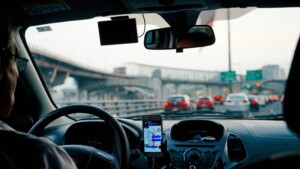
One area of advice given in a Nine Star Ki analysis has to do with travel directions. The goal is to “go with the flow” instead of against it. The goal is to have the most positive outcome for any of our noteworthy travels, for personal or business reasons.
We are not referring to your trip to the grocery store or your daily trek to the office. The use of this information has been applied historically for monumental decisions and travels, including military strategy. As I compose this article, it’s just been a few hours since the second attempt on Donald Trump’s life. He could stand to benefit from Nine Star Ki advice when it comes to any of his future travels, whether announced or not.
Most people are looking at Nine Star Ki advice for the year or month they plan to move, travel for pleasure or for work. When I have advised clients in the past, I have focused on three or four of the most risky travel directions, but there are seven “dangerous” directions according to author and Nine Star Ki master Takashi Yoshikawa (1924-2006).
One has to understand that there is a concept here about our connection to time, space, planet Earth, and it is like a “wireless” web connection that we have with the planet as well as with others. “Others” can be people we know and interact with regularly or it could include impact by total strangers. We have that saying, “timing is everything,” and this is the essence of Nine Star Ki.
Yoshikawa outlined in his book, The Ki, the seven directions to avoid in travel, whenever possible. He gave these directions Japanese titles and some of them mirror directions we are cautious of in the practice of Feng Shui as well. The dangerous or unfavorable directions are based on the personal energy of the individual (based on birth date) in conjunction with the current yearly or monthly cycle we are considering.
Honmei-Satsu (Attack of the self)
This direction of travel is when you travel toward your own star, your own energy for the year. Example: in 2025, the direction of Northwest will host the annual 3 star. Persons born in 1961, 1970, 1979, 1988, 1997 and continuing every nine years, 3 star people in 2025 should avoid traveling toward their own direction. It is considered unsettling. We have that saying when a person “does not know whether they are coming or going,” which implies a confused state.
Honmei-Teki-Satsu (Attack of your own mind)
With the translation of “attack of your own mind,” it implies a crazy-making situation, where you can be very disorganized traveling in that direction. Continuing with the same 3 star person in 2025: if their own 3 star is in the northwest for the year, then traveling in the opposite direction can also be unfavorable. The opposite of northwest is southeast. These travel directions are all relative to where you live.

Go-O-Satsu (Destruction)
This is travel towards the annual 5 star. In both Feng Shui and in Nine Star Ki, the 5 star is considered energy which can instigate accidents or serious illness. In Feng Shui, we try to avoid remodeling the portion of the house with the annual 5 star and in Nine Star Ki, we try not to move in that direction. For 2025, the annual 5 star will be in the direction of northeast. This could be bad for anyone. The negative influence of traveling toward the 5 star could be compounded if it ALSO happens to be the Honmei-Satsu or Honmei-Teki-Satsu for the person as well.
Anken-Satsu (Accidental Direction)
This travel advice should come as no surprise and it means no one should try to travel opposite the 5 star. This is like turning your back to someone who could hurt you. In 2025, with the annual 5 star in the direction of northeast, this simply means that the opposite direction of southwest could be a problem as well. What could happen? Well, we’re hoping to avoid situations where you are taken by surprise, such as a car accident or a robbery. Is it guaranteed that you will suffer if you travel opposite the 5 star? Of course not. We also want to weigh in here if there are any compounding influences or not.
For example, opposite the 5 star in 2025, the annual 8 star will be in the southwest. Traveling toward the 8 star can be a really good direction for a 6 or 7 metal star person. This assignment as a 6 or 7 Metal star person is based on birth year. This includes people born in years like 1966, 1967, 1975, 1976 and other years that are multiples of 9 of these years listed. If it will be a good direction of travel for certain people, they may do okay, in spite of other factors .
Sai-Ha (Break-up, lack of energy—yearly)
The Sai Ha direction has a correlation in Feng Shui and is referred to as the “Sui Po” direction or the “Chong” direction. The Japanese phrase “Sai- Ha” alludes to the direction which is the opposite of the direction associated with the yearly zodiac sign. For example, in 2025 it is the year of the Snake. What opposes the Snake is the Pig. The Chinese zodiac sign of the Pig is associated with the direction of North/Northwest. It is a specific 15 degree increment on the compass dial which spans 325-335 degrees. Plans cannot be accomplished. There can be contract disputes, separations, and other worrisome outcomes. In Feng Shui, we relate to this as a direction which can tire you out, drain you of your energy or finances. It also ends up being an unlucky direction for remodeling, changing location each year. It is one the “Construction Sha” directions to be aware of each year. This is something I routinely cover in the Annual Update reports I do for clients.
Getsu-Ha (Break-up, lack of energy-monthly)
The Gestsu-Ha direction is similar to the Sai Ha direction, but it occurs on a monthly basis, as opposed to a yearly notation. Each month is associated with a fixed Chinese zodiac sign. And the opposite sign is the one to be aware of. For example, the month of April is always a Dragon Month. What opposes the Dragon is the Dog. The Dog direction is a portion of Northwest called “Northwest-1” range. It is between 295-305 degrees. So we can say that in April, it is not advised to travel in the Dog direction. This would be general advice for anyone.
Joi-Taichu (Opposition)
The Joi-Taichu direction is a nod to a very important principle in Nine Star Ki. Each year, there is a star (expressed as a number) which will be residing in a direction that is opposite its “home base.” To know what direction each of the 9 stars is associated with, you must be familiar with Nine Star Ki’s Universal Chart, which happens to be the same as Feng Shui’s Post-Heaven Magic Square.
For example: In 2025, the 8 star will be residing in the direction of southwest. The 8 star’s home base is northeast. In other aspects of Nine Star Ki, we call this the “Reversed Luo Shu Axis.” The 8 star is going to be having a “bad hair day” all year long in 2025 because it is sitting in a position that is directly opposite its own origin direction. If you travel toward any star that is in that yearly cycle, you can get swept up in the turmoil, like an innocent bystander. Small problems can build, gain momentum, and eventually become bigger problems. It just so happens that in 2025, the 8 star will be “Joi-Taichu” in the southwest on top of being opposite the 5 star in the northeast. This is a Double Whammy. It may play out in some annoying ways in our personal lives, but it could indicate something really serious on a global scale. The same charts used for personal analysis can be used to make worldly predictions.
Not mentioned in Yoshikawa’s list, we could conjure up an 8th dangerous direction based on the same principle. That would include looking at monthly charts to determine when a monthly star is positioned in the exact opposite location of its home base. In those cases, you may not want to travel in the direction of the Joi-Taichu for the month.
When I help Nine Star Ki clients plan their travels, we start with the annual influences. It gets a little challenging when couples have conflicting good and bad directions based on their birth data. And if the client happens to also get Feng Shui advice from me, I will cross-reference the yearly and monthly cycles of their home, and how those cycles stand up against a personal cycle. The domains are separate and the interpretations of the stars are very distinct, but in knowing that, I can have a broader understanding of the influences coming from different sources.
For example: let’s compare the 4 star in Feng Shui and Nine Star Ki. If a person has a monthly 4 star in their bedroom, it could imply that they will have more opportunities for travel (career and romance). It can also imply some career advances, which might include the need to travel. In Nine Star Ki, if a person is aligned with the 4 star in their personal Nine Ki chart, it can suggest travel by plane, but if that star is on the Reversed Luo Shu Axis or the Joi-TaiChu, the travel plans may cancel or go awry. It could also imply that the person may be ambivalent about something and that can include a specific topic, like the timing of travel or the decision to accept a new job offer.
On a more positive note, we are not just trying to avoid the dangerous or the negative directions. There are still plenty of GOOD directions for travel at any given time. These principles are covered in my Introduction to Nine Star Ki, Part 1 and Part 2 Case Studies.
Author: Kartar Diamond
Company: Feng Shui Solutions ®
From the Nine Star Ki Blog Series

